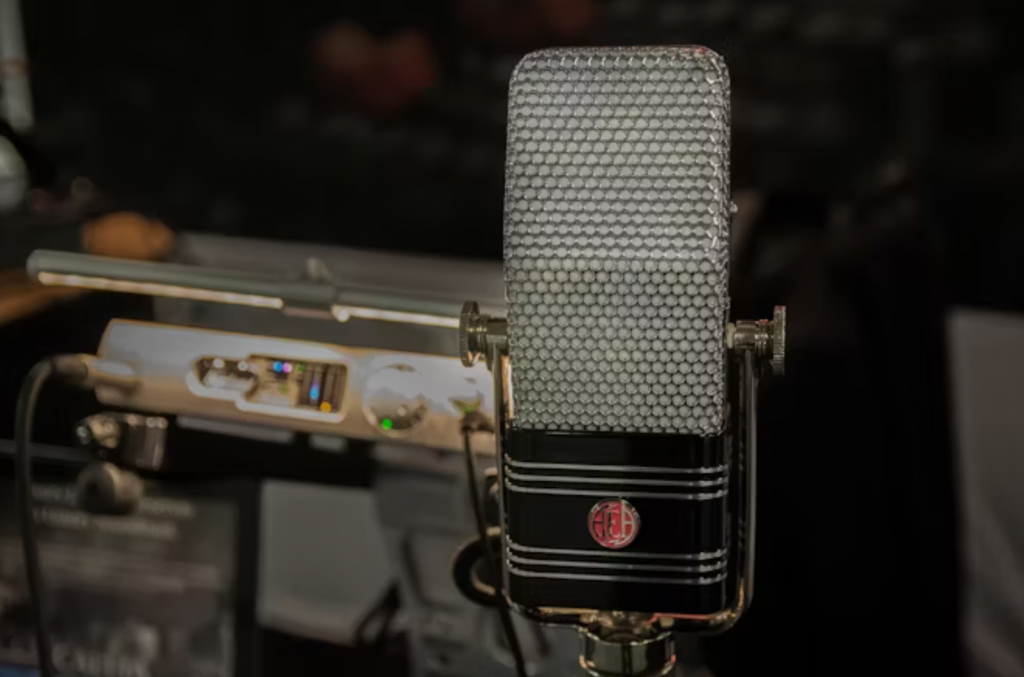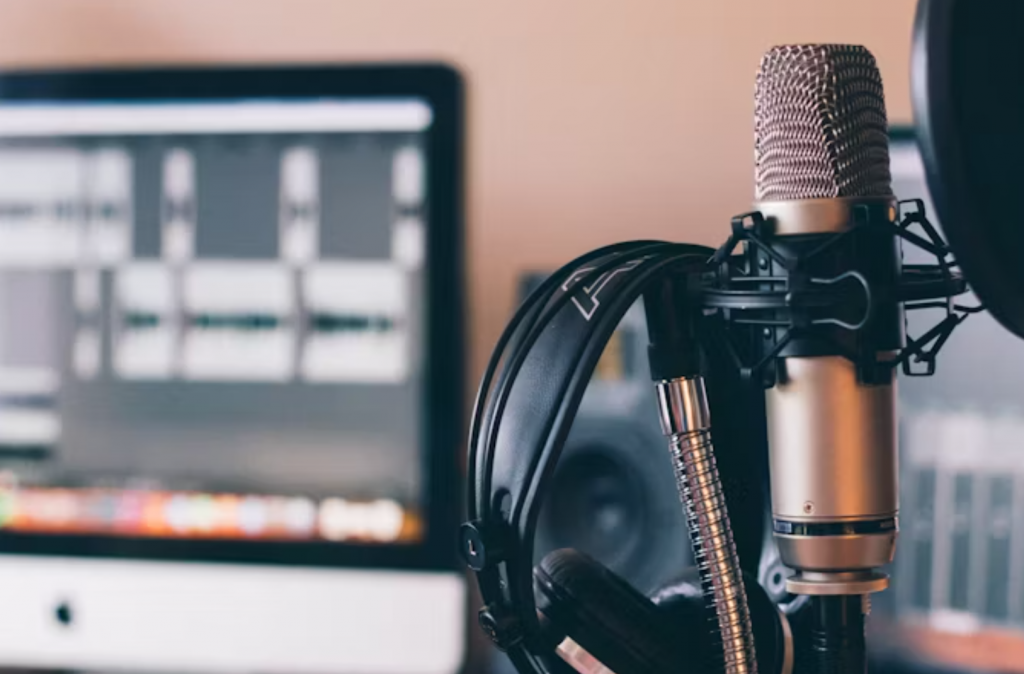Introduction to the Shure SM7B
The Shure SM7B is a microphone that’s become almost iconic among podcasters, streamers, and vocalists alike. Known for its versatility, durability, and incredible sound quality, it’s no surprise that this mic is often at the top of people’s wish lists. But what exactly makes the Shure SM7B stand out in a crowded field of microphones?
Whether you’re looking to capture clear, professional-quality vocals for a podcast or want a mic that delivers rich, full sound for vocal performances, the SM7B has earned a reputation for being the go-to choice. In this review, we’ll dive deep into why this microphone is beloved by so many.
History and Legacy of the Shure SM7B
A Brief Overview of Shure’s Reputation
Shure is a name that’s synonymous with quality audio equipment. Since its founding in 1925, the company has been a leader in producing microphones and audio accessories. The SM7B, specifically, has been a part of their lineup for decades, with the model earning its place in studios around the world.
The Evolution of the SM7B
Originally designed as a dynamic vocal microphone, the Shure SM7 has evolved over the years to become the modern SM7B. It’s been widely adopted in a range of industries, from radio stations to music studios. Shure made subtle but effective changes, ensuring that the SM7B was suited to both professional and consumer-grade use.
Key Features of the Shure SM7B
Cardioid Polar Pattern
The Shure SM7B boasts a cardioid polar pattern, which means it picks up sound primarily from the front and rejects unwanted noise from the sides and rear. This makes it ideal for recording in environments where background noise is a concern. The focused pickup pattern ensures that your voice comes through clean and clear.
Versatility in Sound Capture
One of the standout features of the SM7B is its adaptability. Whether you’re speaking softly or belting out high notes, the SM7B can handle a wide range of sound sources. This is particularly useful for podcasters who may speak at varying volumes or vocalists who perform both whispering ballads and powerful rock anthems.
Built-in Air Suspension Shock Isolation
The SM7B comes equipped with an air suspension shock isolation system that helps reduce mechanical noise and vibrations. This means you get cleaner audio without having to worry about bumps or handling noises during recording. Whether you’re recording a podcast or a live performance, this feature ensures you get pristine audio every time.
Why Podcasters Love the SM7B
Excellent Voice Clarity
One of the primary reasons podcasters flock to the Shure SM7B is its ability to deliver exceptional voice clarity. The microphone is tuned to capture the nuances of the human voice, making it perfect for interviews, storytelling, and long-form podcasts. Whether you have a deep, rich voice or a higher-pitched tone, the SM7B reproduces it faithfully.
Noise Rejection and Isolation
Podcasts often require recording in non-ideal environments, which can include background noise. The SM7B’s cardioid pattern effectively minimizes this, ensuring that listeners are not distracted by clattering keyboards or other off-mic sounds. It isolates your voice while rejecting unwanted sounds, making it a top choice for podcasters who record in noisy spaces.
Ease of Use for Beginners
Although the Shure SM7B is a professional-grade microphone, it’s also surprisingly easy for beginners to use. The setup is straightforward, and with the right preamp, the SM7B performs exceptionally well even without the most expensive gear.
Why Vocalists Swear by the SM7B
Warmth and Richness in Sound
Vocalists often seek out microphones that provide warmth and body to their sound. The Shure SM7B does exactly that, enhancing the natural richness of your voice while avoiding any harshness or sharpness. It’s particularly popular with rock singers and vocalists who want a microphone that can handle their dynamic vocal performances.
Flexible for Different Vocal Types
The SM7B is versatile enough to accommodate a wide variety of vocal types. From deep baritones to bright sopranos, this microphone captures every tone and inflection accurately. This makes it a favorite in both live performances and studio recordings.
Durability and Longevity
Vocal performances often involve heavy use, and the Shure SM7B is built to last. It’s designed with durable materials that withstand the rigors of daily use. Whether in the studio or on stage, you can trust the SM7B to hold up for years without losing sound quality.

Sound Quality Comparison: SM7B vs. Other Microphones
Comparing the SM7B to the Audio-Technica AT2020
When comparing the Shure SM7B to the Audio-Technica AT2020, the SM7B holds a clear advantage in noise rejection and sound isolation. While the AT2020 is great for studio use, it doesn’t provide the same level of background noise isolation or versatility in picking up sound at varying distances.
Shure SM7B vs. Rode NT1-A
Both the SM7B and Rode NT1-A are popular choices for recording vocals. However, the SM7B offers a more balanced sound, especially for voice applications, while the NT1-A may sometimes sound too bright or sharp. The SM7B provides a warmer, more natural vocal tone that is preferred by many podcasters and vocalists.

The Pros and Cons of the Shure SM7B
Advantages
- Exceptional sound clarity and detail.
- Excellent rejection of background noise.
- Suitable for a variety of recording applications.
- Durable and built to last.
- Easy to use for beginners and pros alike.
Disadvantages
- Requires a strong preamp for optimal performance.
- Not the best option for high-gain vocals without an additional preamp boost.
- The design might feel bulky for some users.
Setting Up and Using the Shure SM7B
Recommended Gear and Accessories
To get the most out of the Shure SM7B, it’s recommended to pair it with a high-quality preamp, such as the Cloudlifter CL-1, which provides the necessary gain for optimal sound. Additionally, a pop filter and a shock mount will help reduce plosives and vibrations, ensuring a clean recording.
Step-by-Step Setup Guide
- Attach the SM7B to a sturdy mic stand using the included mount.
- Connect the mic to an audio interface or preamp with an XLR cable.
- Set the gain on your preamp to an appropriate level, ensuring the SM7B receives enough power without distortion.
- Use a pop filter and shock mount to further isolate the microphone from noise and vibrations.
- Adjust your recording levels and start recording!
Conclusion
The Shure SM7B is a microphone that offers everything a podcaster or vocalist could want: excellent sound quality, versatility, noise rejection, and durability. Its rich, warm sound and ability to isolate your voice from background noise make it a top choice for professional and amateur users alike. Whether you’re recording in a studio or setting up a home podcasting setup, the SM7B delivers outstanding results.
If you’re looking for a microphone that offers value for money, exceptional performance, and longevity, the Shure SM7B is undoubtedly a worthy investment.
FAQs
- Is the Shure SM7B good for streaming? Yes, the Shure SM7B is a great choice for streaming, offering clear and crisp voice capture with excellent noise isolation.
- Do I need a preamp for the SM7B? Yes, the SM7B requires a preamp for optimal sound quality, as it’s a low-output dynamic microphone.
- Can the Shure SM7B be used for instruments? While primarily designed for vocals, the SM7B can be used for certain instruments, particularly if you want a more focused, controlled sound.
- What is the difference between the SM7B and the SM58? The SM7B is a dynamic cardioid microphone that offers broader frequency response and is more suited to vocalists and podcasters. The SM58, on the other hand, is designed for live sound and has a more focused midrange.
- How do I reduce plosives when using the SM7B? Using a pop filter or a foam windscreen will help reduce plosives, ensuring a cleaner recording without distortion from hard “P” or “B” sounds.


Leave a Reply